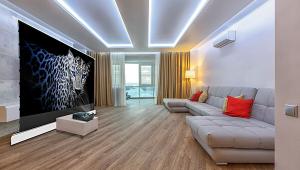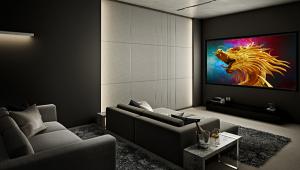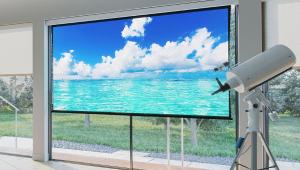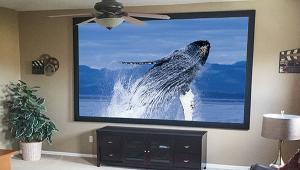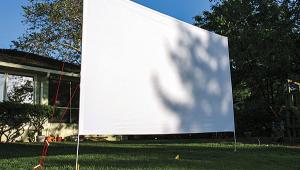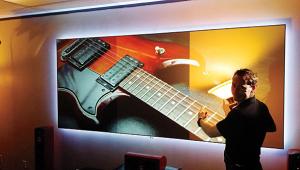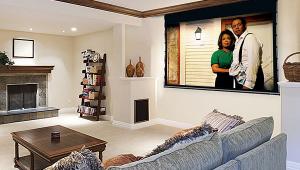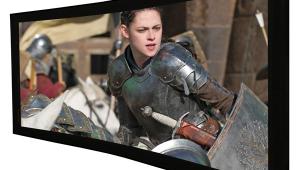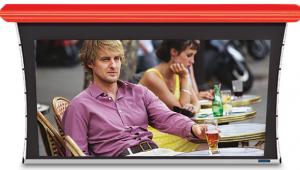Stewart Filmscreen Harmony G2 Acoustically Transparent Screen Review
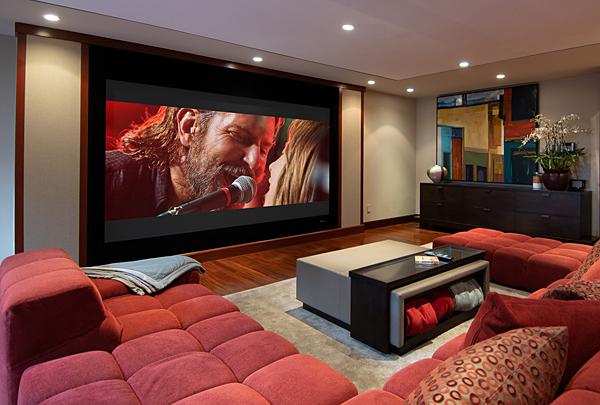
AT A GLANCE
Plus
Superb uniformity and detail rendition
Precise color tracking and accurate saturation
Minimal reduction in audio fidelity
Minus
Woven design involves inherent light loss
Beer budgeteers may find it champagne-priced
THE VERDICT
Stewart's remarkable new Harmony G2 is a reference-level Acoustically Transparent offering for systems with speakers installed behind the screen.
A myriad of boulevards dissects a tract of former citrus groves, referred to long ago as Hollywoodland. Of these thoroughfares, singularly, there is Hollywood Boulevard, known the world over for a century of broken dreams. As lore recounts, and contemporary tales of woe reveal, there is little left to ponder beyond what should have been after most fame-bound aspirants leave.
But Tinseltown can also yield success stories, such as in 1947 when an unknown named Roy C. Stewart answered a casting call—of sorts—and quite literally became a Hollywood screen legend. By 1956, Roy had earned an Academy Award for Technical Achievement, garnering a second one in 1964. Roy and Stewart Filmscreen, as they say, were Hollywood gold. No other screen company has been similarly feted, and to this day, Stewart can boast of providing a screen for your home identical to one used to put the final touches on an Academy Award winner.
Which brings us to another Hollywood hopeful: Stewart Filmscreen's new Harmony G2 Acoustically Transparent (AT) projection screen. AT screens using a perforated surface to pass-through sound were introduced during the develop- ment of sound enhancement to movies. At first, films were synchronized to discs resembling 78 RPM shellac pressings that contained musical accompaniment, but sound-on-disc eventually yielded to Movietone's superior optical sound-on-film process. To optimize dialogue localization for the new "talkies," theater speaker systems migrated behind AT screens.
The Stewart AT portfolio has long included both vinyl offerings and the company's Harmony woven fabric, a screen material specifically developed to enhance audio fidelity. But with acoustic transparency pushed as a primary attribute, AT screens like the Harmony have typically been plagued by light loss and both color accuracy and white field uniformity issues. Enter MicroPerf. This groundbreaking miniature hole pattern that Stewart designed for home theater screens enabled concealed speaker placement behind a wider range of vinyl surfaces, providing countless possibilities for gain and ambient light rejection formulations. But even with the advancements offered by MicroPerf, suppression of audio detail remains a downside to perforated vinyl screens, with early versions of such designs even requiring passive EQ to compensate for high-frequency roll-off.
That's where the Harmony G2 comes in. The enhanced video resolution available with native 4K projectors forced screen makers to pursue tighter weave patterns for AT materials. Also recognizing a renewed interest in woven designs among audio- conscious videophiles, Stewart set out to update its Harmony fabric into a long-awaited second-generation product, one with dramatically reduced color shift and uncompromised audio resolution. (The company claims exemplary color behavior on- and off-axis plus a measured 1 to 2dB higher sound output measured from 5kHz to 20kHz than its competition.)
Many companies simply source screen materials from third-party manufacturers. Stewart's goal with Harmony G2 was to bring things as in-house as possible, sending engineers out to investigate advancements in fabric milling and materials composition and acquiring suitable machinery for the state-of-the-art weaving process necessary to create a class-leading screen material. But such an effort represented an outlay of Bitcoin-bleeding proportions. The next best option? Locate yarn capable of yielding fabric that could meet challenging optical demands for neutrality and color repro- duction, and then collaborate with a milling concern equipped with a specialized industrial loom for weaving the complex, proprietary pattern the project necessitated. This daunting, exhaustive process establishes Harmony G2 as an exclusively Stewart-engineered, quality-controlled product.
Packaging & Setup
My 96-inch-wide by 54-inch- high Harmony G2 screen arrived damage-free in Stewart's tradi- tional bullet-proof packaging. Each interlocking, beveled segment of the included 3.25-inch hewn-aluminum Deluxe frame was swathed in Stewart's light-deadening VeLux, an industry icon by any metric. (The Deluxe frame adds six-and-one-half inches to the screen's total horizontal and vertical dimensions.) The Harmony G2 material affixes to receptor snaps lining the inner perimeter of the frame's backside, while a second, light-damping backing liner attaches directly to the mate- rial's dual-sided snaps. Heavy- duty piping borders the screen material to securely embed the snaps and prevent duress during assembly. The carefully manicured sizing, meanwhile, ensures the material weave pattern does not distort from over-stretching.

